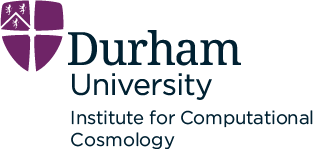Simulation-based clustering to constrain Modified Gravity theories
Carolina Cuesta-Lazaro
April 2022 - Britgrav

FORGE Collaboration: Christian Arnold, Benjamin Giblin, Joachim Harnois-Deraps, Yan-Chuan Cai, Cesar Hernandez-Aguayo, Chris Davies, Enrique Paillas, Cheng-Zong Ruan and Baojiu Li

Space-time
geometetry
Energy content
Adding new degrees of freedom
- To the energy content (dynamic) DARK ENERGY
- To the way space-time geometry reacts to the energy content MODIFIED GRAVITY (FIFTH FORCES)
?

GRAVITATIONAL ACTIONS
N-BODY SIMULATIONS
LIKELIHOOD



LARGE SCALE STRUCTURE DATA
DESI,Euclid ...

GRAVITATIONAL ACTIONS
N-BODY SIMULATIONS
LIKELIHOOD



LARGE SCALE STRUCTURE DATA
DESI,Euclid ...
DESI
Spectroscopic
30+ million redshifts
Credit: D. Schlegel/Berkeley Lab using data from DESI
EUCLID
Imaging
15,000 square degrees out to redshift z=2

arxiv:2109.04984
nDGP
Can match expansion to LCDM
Screening mechanisms to pass solar system tests
Do not modify speed of gravitational wave propagation
Need a "cosmological constant"
f(R)
FORGE: F(R)
BRIDGE: nDGP
More models coming soon!
MG-GLAM x100 faster than MG-Arepo
arxiv:2110.00328
arxiv:2110.00566


arxiv:2109.04984


2-POINT STATISTICS
arxiv:2109.04984

Credit: https://cs231n.github.io/convolutional-networks/
FORGE collaboration (in prep)

Harnois-Deraps et al (in prep)

Mimicking Euclid












Environment dependent clustering

- O(50) N-body simulations -> sub-percent accurate predictions for two point observables -> tight constraints on Modified gravity parameters through a Euclid-like survey
- We can engineer summary statistics that extract more information by exploiting environmental dependencies. But, can we model them to the same accuracy?

What is the impact of baryons on small scales?
Are there degeneracies with other cosmological parameters that would alter our constraints?
Simulation-based clustering predictions to constrain Modified Gravity theories
By carol cuesta
Simulation-based clustering predictions to constrain Modified Gravity theories
- 496



